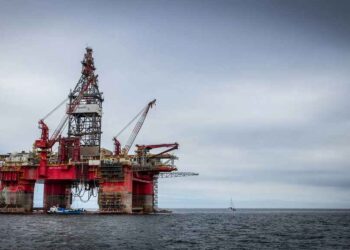The Northern Courier Pipeline (NCP) is a 90km pipeline system proposed to transfer bitumen and diluent products from the Fort Hills mine and bitumen extraction facility to Suncor’s East Tank Farm (ETF) located near the oil sand hub of Fort McMurray, Alberta. The project was approved for construction by the Alberta Energy Regulator (AER) in July 2014.
The C$800m ($745m) pipeline project is being taken up as part of the C$13.5bn ($12.3bn) Fort Hills oil sands mining project being developed by the Fort Hills Energy Limited Partnership (FHELP) comprising Suncor and its partners Teck Resources and Total SA. The Alberta oil sands project, which is scheduled to come online in 2017, is expected to produce up to 180,000 barrels of oil a day in the first year of production.
The Northern Courier Pipeline is being designed and built by TransCanada Corporation (TransCanada) and will be operated by TransCanada’s wholly-owned subsidiary Northern Courier Pipeline GP.
Project background and benefits
TransCanada initiated a feasibility study and consulted with stakeholders and Aboriginal communities for the Northern Courier pipeline project in June 2012. The application for construction approval for the project was submitted to the Alberta Energy Regulator (AER) in April 2013. Construction is scheduled for completion by the end of 2016.
The project will complement TransCanada’s extensive pipeline network in Alberta, which includes about 24,200km of natural gas pipelines across the Canadian province and about 3,500km of crude oil pipelines as part of the Keystone Pipeline system for transporting crude oil from Alberta to other US markets.
Northern Courier Pipeline details
The NCP project features a bitumen pipeline and a diluent pipeline, both 90km in length, and associated pipeline installations including a pipeline tank farm, a bitumen pump station and a diluents pump station.
The bitumen pipeline, consisting of a 24in (610mm) diameter insulated steel pipeline, will run from 90km north of Fort McMurray to 27km north of Fort McMurray, transporting heated or diluted bitumen from the Fort Hills Mine and Bitumen Extraction Facility to the East Tank Farm (ETF).
The diluent pipeline running parallel to the Bitumen pipeline, for transporting diluents including condensate, diesel and synthetic crude oil from the ETF to Fort Hills, will consist of 12in (323.9mm) diameter steel pipeline.
The bitumen pump station will be located at the northern end of the pipeline and the diluent pump station will be installed at the southern end. The pipeline tank farm at the northern end will be comprised of two 300,000 barrel bitumen tanks, one 50,000 barrel diluent tank and one 50,000 barrel diesel tank.
Construction of the pipeline
The Northern Courier pipeline is expected to break ground in the third quarter of 2014 and is scheduled for service in 2017.
“The project will complement TransCanada’s extensive pipeline network in Alberta.”
Crossing techniques including boring, horizontal directional drilling (HDD) and open cuts will be employed for constructing a water course, railway, road, and other pipeline crossings planned along the pipeline route. The 1.7km long Athabasca River Crossing planned for the project, for example, will be constructed using HDD technique, minimising impact on the river.
The pipeline construction will involve the use of heavy machinery for earth moving, excavation, material handling/hauling, welding and testing. Graders, bulldozers, backhoes, bucket wheel trenchers, automatic welding, portable cranes and side-boom cranes will all be used in the construction process.
Contractors involved with the project
TransCanada was selected to design, build and operate the Northern Courier pipeline under a long-term contract signed in August 2012.

















































